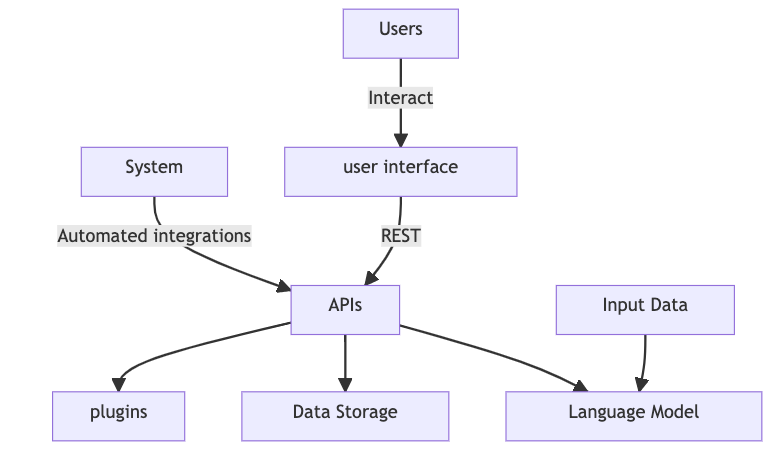Unlocking the Power of Large Language Models in the World of IT: Embracing ChatGPT
As technology continues to evolve, the integration of artificial intelligence has become a game-changer in both the software and banking industries. One remarkable development in this AI landscape is the advent of Large Language Models (LLMs), which are transforming the way we interact with computers and data.
Introduction to Large Language Models
A Large Language Model, or LLM, is more than just a fancy acronym. It represents a type of artificial intelligence algorithm, often referred to as a “model,” that undergoes extensive training on an expansive corpus of textual data. This training equips LLMs with a profound understanding of language patterns and structures, enabling them to perform a wide array of tasks, including:
Generating text: From poems and stories to complex code snippets, LLMs can produce content that’s remarkably human-like.
Language translation: They excel at bridging linguistic gaps by translating text from one language to another.
Comprehensive question-answering: LLMs provide detailed and informative responses to queries.
Text summarization: They condense lengthy documents into concise summaries, enhancing content curation and information retrieval.
Creative content creation: LLMs have a knack for producing imaginative pieces of writing.
In essence, LLMs have reshaped how we interact with technology. They’ve breathed life into automated chatbots, enabling more engaging and natural conversations with users. Moreover, they’ve empowered content generation and text summarization.
Today, several notable LLMs are leading the charge in AI innovation:
- ChatGPT: A versatile conversational partner.
- Bard: An artist in the realm of creative content.
- Google Translate: Bridging language barriers with precision.
- Grammarly: Enhancing writing with grammar and style checks.
- Bing: Leveraging LLMs for various language-related tasks.
Generative Pre-trained Transformer (GPT)
Among these LLMs, one family stands out: Generative Pre-trained Transformers (GPT). The “GPT” in its name signifies “Generative Pre-trained Transformer,” and it encapsulates the essence of these models.
Generative: GPT models have a remarkable ability to generate human-like text. They can take a prompt or an incomplete sentence and produce contextually relevant text to complete it.
Pre-trained: Before they’re ready for action, GPT models undergo extensive pre-training on massive amounts of textual data. During this phase, they learn the intricate patterns and structures of language.
Transformer: GPT models are built upon the Transformer architecture, a powerful neural network design known for handling sequential data with exceptional proficiency. This architecture has been a pivotal advancement in deep learning and has paved the way for potent language models.
Key Features of GPT Models
GPT models are not one-size-fits-all; they come in various sizes, from GPT-1 to GPT-3 and beyond. The size correlates with performance, with larger models delivering superior results but necessitating more computational resources.
These models are versatile and adaptable, capable of being fine-tuned for specific language tasks. Here are the key features that make GPT models stand out:
Human-Like Text Generation: GPT models have the uncanny ability to produce text that’s virtually indistinguishable from human-authored content. This quality makes them invaluable for content generation, chatbots, and more.
Language Understanding: GPT models comprehend language intricacies. They can answer questions, complete sentences, and provide contextually relevant responses in conversations.
Language Translation: These models excel at language translation tasks, ensuring high accuracy when converting text from one language to another.
Text Summarization: GPT models are adept at summarizing lengthy documents into concise and coherent summaries. This capability proves invaluable for content curation and efficient information retrieval.
The Architecture in Action

The system architecture harnesses the power of a Large Language Model (LLM) meticulously trained on extensive internet and literary text. This LLM takes the lead in natural language understanding and generation.
Users interact with the system through a user-friendly interface, reminiscent of an online chat. This interface serves as a portal for inquiries and information retrieval.
Under the hood, the LLM communicates with a range of APIs, serving as intermediaries for comprehension and data retrieval. These APIs ensure seamless communication between the LLM and the external systems.
Data storage plays a pivotal role, functioning as a digital repository for essential information. This repository enhances the LLM’s capabilities by providing historical context.
What’s truly fascinating is the system’s extensibility. By integrating plugins, the LLM’s functionality can be expanded. For example, a translation plugin can be incorporated to enable multilingual capabilities, while a creative writing plugin can equip the LLM to craft compelling narratives. These plugins act as specialized tools, amplifying the LLM’s skill set for specific tasks.
In summation, the system draws its strength from a highly proficient LLM, trained on an extensive corpus of text data. It elevates human-computer interaction to a more natural level, offering the potential for enhanced versatility through task-specific plugins.
As we navigate the ever-evolving landscape of AI and technology, Large Language Models like GPT continue to reshape the way we work and engage with data. These models empower innovation in both the software and banking industries, opening doors to new possibilities and more intuitive human-computer interactions. Embracing the potential of LLMs is not just an option; it’s a strategic advantage in the IT world.